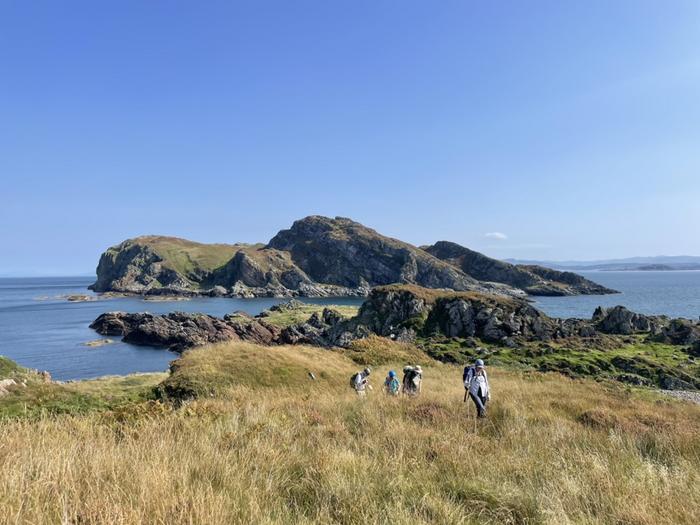Rare Record of Snowball Earth Confirmed in Scottish and Irish Rocks
Posted on Categories Discover Magazine

The years between 662 million years and 700 million years ago — just before and after glaciers left a half-mile thick rock layer — were mysterious.
There is little information about the planet’s conditions just before the period of the deep freeze, which covered the planet in ice and is sometimes referred to as Snowball Earth.
Now, researchers have examined a rock feature showing what life on the planet was like — both before the freeze and after the subsequent thaw. The report in the Journal of the Geological Society of London shows how those events may have given rise to complex life forms.
Glacial Rock Formations
Many rock formations created by that glaciation event — for instance in North America and Namibia — don’t show the “before and after” transition. However, researchers located one exposed outcrop of a rock formation that spanned Ireland and Scotland.
That exposed rock, found on the Scottish islands called the Garvellachs, provides a glimpse into a key moment of both geology and evolution. The layers of rock show evidence of a tropical environment prior to the freeze and the rise of life after the thaw.
“These rocks record a time when Earth was covered in ice,” Graham Shields, of University College of London (UCL) and first author of the paper, said in a press release. “All complex, multicellular life, such as animals, arose out of this deep freeze, with the first evidence in the fossil record appearing shortly after the planet thawed.”
Read More: Our Planet’s Changing Orbit Helped Life Survive ‘Snowball Earth’
An Ancient Tropical Environment
Underneath the rocks laid down during the glaciation, the scientists found an earlier layer of rocks over 200 feet thick. These carbonate rocks formed in tropical waters and recorded a tropical marine environment that teemed with bacterial life that gradually tapered off as the planet cooled.
The period after the ice melted must have been as dramatic as when it first emerged.
“The retreat of the ice would have been catastrophic,” Shields said. “Life had been used to tens of millions of years of deep freeze. As soon as the world warmed up, all of life would have had to compete in an arms race to adapt. Whatever survived were the ancestors of all animals.”
Read More: Ice Ages: What Causes the Earth to Freeze Over Every Few Million Years?
Rare Geological Evidence of Ancient Glaciation
To better understand both the geological and evolutionary snapshots from before and after the glaciation, a UCL research team collected samples of sandstone from the glacier rock layer, as well as from the older one beneath it. They analyzed zircons in the rock and used the rate that uranium decays in them to show when the glacier deposited the rocks.
The team considers itself fortunate it found this rare geological glimpse of a key period in Earth’s history.
“Most areas of the world are missing this remarkable transition because the ancient glaciers scraped and eroded away the rocks underneath, but in Scotland by some miracle the transition can be seen,” Elias Rugen, a Ph.D. candidate at UCL and an author of the paper said in a statement.
Read More: 20 Things You Didn’t Know About Glaciers
Article Sources
Our writers at Discovermagazine.com use peer-reviewed studies and high-quality sources for our articles, and our editors review for scientific accuracy and editorial standards. Review the sources used below for this article:
Before joining Discover Magazine, Paul spent over 20 years as a science journalist, specializing in U.S. life science policy and global scientific career issues. He began his career in newspapers, but switched to scientific magazines. His work has appeared in publications including Science News, Science, Nature, and Scientific American.